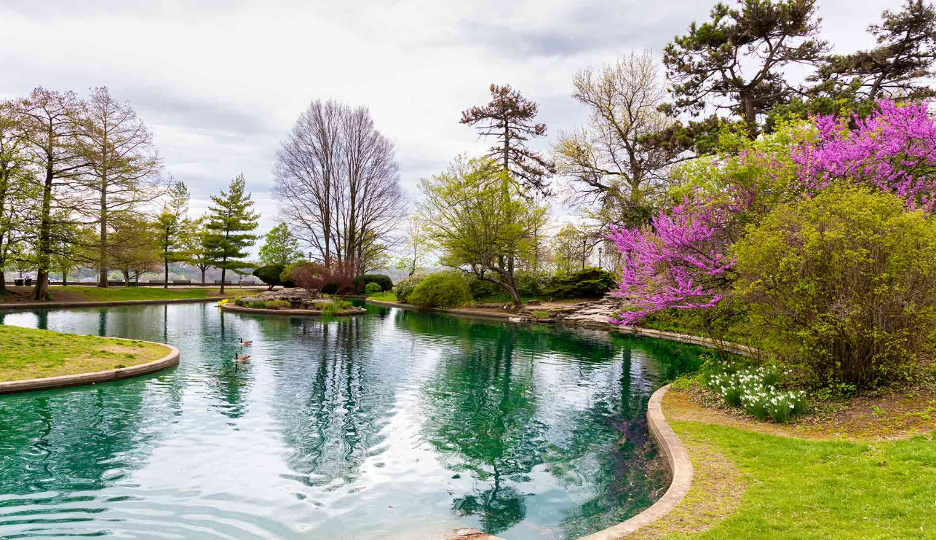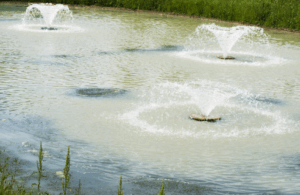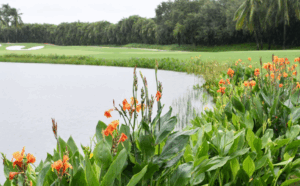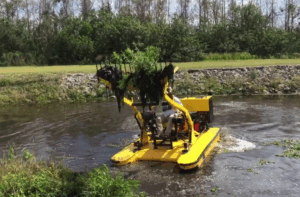The health of any lake starts with having clean, balanced water. When the water feature gets cloudy, algae grow out of control, bad smells develop, or a thick sludge builds up on the bottom, it’s a pretty clear sign your water is in trouble and needs some TLC. Not only will improving your water quality keep your lake looking its best, but it also gives a huge boost to aquatic life and makes it a whole lot easier to keep weeds under control.
When it comes to improving a lake’s water quality, there are some practical and effective solutions you can use. Let’s take a look at the most common and reliable methods, shall we?
Get an Aeration System Sorted
Having stagnant water is one of the main causes of poor water quality. When that happens, it creates the perfect breeding ground for algae to take off, unpleasant odours to develop and for sediment to start building up fast. You might start to notice fish breaking the surface, a sudden increase in mosquito activity or just a really nasty, swampy smell. These are all pretty obvious signs that your pond needs an aeration system to restore some balance to its ecosystem.
What’s the Purpose of a Lake Aerator?
An aeration system is designed to boost the amount of dissolved oxygen in the water, keeping it fresh, clear and healthy. By circulating water from the bottom up, an aeration system can break down all that organic matter, prevent algae from taking over and give your aquatic life a real chance to thrive. It also helps get rid of some of that yucky sludge and nutrient buildup, which in the long run makes your pond or lake a lot easier to maintain.
There are some main types of lake aerators to choose from, each one suited to different water features. Surface aerators work by agitating the top layer of water and creating a bit of movement to help oxygen levels in the water. These are ideal for smaller ponds or shallow lakes.
Fountain aerators do a similar job but also add a bit of flair, making them a great option if you want to get the most out of your pond from both a functional and aesthetic point of view. Then there are the bottom diffused lake aerators – these push air from the bottom of the lake, making sure oxygen gets distributed all the way down to the bottom of the water column. This type is ideal for deeper bodies of water.
Choosing the right aeration system depends on the size, depth and shape of your pond or lake. A small shallow pond may only need a simple surface aerator, while a deeper lake will need a more serious system, like a bottom diffused one. Working with a water management professional can give you an idea of the best solution for your specific needs. With the right aeration system in place, you’ll soon see clear water, healthier aquatic life and a water feature you’ll actually want to spend time in.
Add Native Plant Buffers Along the Border
Planting native vegetation around your lake is one of the easiest and most effective ways to improve water quality. Plant buffers act as a natural filter, trapping sediment, nutrients and pollutants before they get into the water. Their root systems help stabilise the soil, reducing erosion and runoff, which are the main causes of murky water and algae blooms.
In addition to improving water quality, native plants create habitats for birds, insects and other wildlife, and help support a healthy and balanced ecosystem. Because they’re local, native species are also low maintenance and require less water and fertiliser, making them a long-term solution.
Apply Nutrient Remediation Techniques
Excessive nutrient buildup (especially nitrogen and phosphorus) is the biggest threat to lake health. When these nutrients are in the water or sediment, they fuel algae growth, reduce oxygen levels and disrupt the natural balance of the ecosystem. Over time, this can lead to persistent water quality problems that can’t be fixed with short-term solutions alone.
Nutrient remediation tackles the problem at the source rather than just treating the symptoms like algae blooms or cloudy water. It’s especially effective in lakes that have ongoing water quality issues despite previous preventative measures.
Common remediation techniques include:
- Phosphorus binders: Eco-friendly compounds like aluminium sulfate or lanthanum-based products attach to free phosphorus in the water or sediment. Once bound phosphorus is unavailable to algae and helps control future blooms.
- Targeted nutrient extraction: Suction or dredging equipment removes nutrient-rich sediment from specific areas of the lake. It can be tailored to the lake’s depth, size and nutrient distribution.
- Biological treatments: Specialised bacteria and enzymes are introduced to break down excess nutrients. This converts nitrogen and phosphorus into harmless compounds and supports long-term water quality improvements.
Benefits of nutrient remediation:
- Prevents nutrient recycling by locking phosphorus into stable forms or removing it entirely.
- Reduces frequency and severity of algae blooms, improves water clarity and oxygen levels.
- Promotes healthier fish populations and aquatic vegetation by restoring ecological balance.
- Works well with other strategies like aeration and shoreline buffers for a comprehensive water management plan.
If you want to improve water quality or have ongoing lake issues, nutrient remediation is a proven and sustainable solution.
Conducting Mechanical Racking and Harvesting
One of the best ways to keep your lake looking its best is to clear out any excess plant life. That’s especially true in areas where you can’t or shouldn’t use chemicals. Overgrown weeds and algae are not just an eyesore – they can also make it hard to use your lake for recreation, and when they break down, they can even suck the oxygen out of the water, stressing out the fish and other aquatic life. Mechanical removal gets at the root of the problem.
Hydro-rakes are specifically built to pull out rooted plants from the lakebed, taking the whole root system with them and disturbing the sediment as little as possible. On the other hand, aquatic harvesters are perfect for cutting and collecting floating or submerged plant life – especially when big mats of algae and giant clusters of weeds are blocking sunlight and bottling up the water flow.
This approach has a range of benefits for water quality. For one thing, it makes the water a lot clearer and nicer to use right away. It also removes organic matter that would just recycle back into the water if you left it there – and that in turn helps stop invasive species from getting the upper hand. When you clear out the excess growth, you’re restoring healthy water flow and opening up boat channels, swimming areas and shoreline access – all without needing to use any chemicals.
If you’re just doing a small-scale clean-up, something as simple as a lake rake can make a real difference in keeping your shoreline weed and algae-free. And the good news is that even a bit of effort can make a big difference in keeping your lake looking its best and maintaining the balance of the ecosystem.




